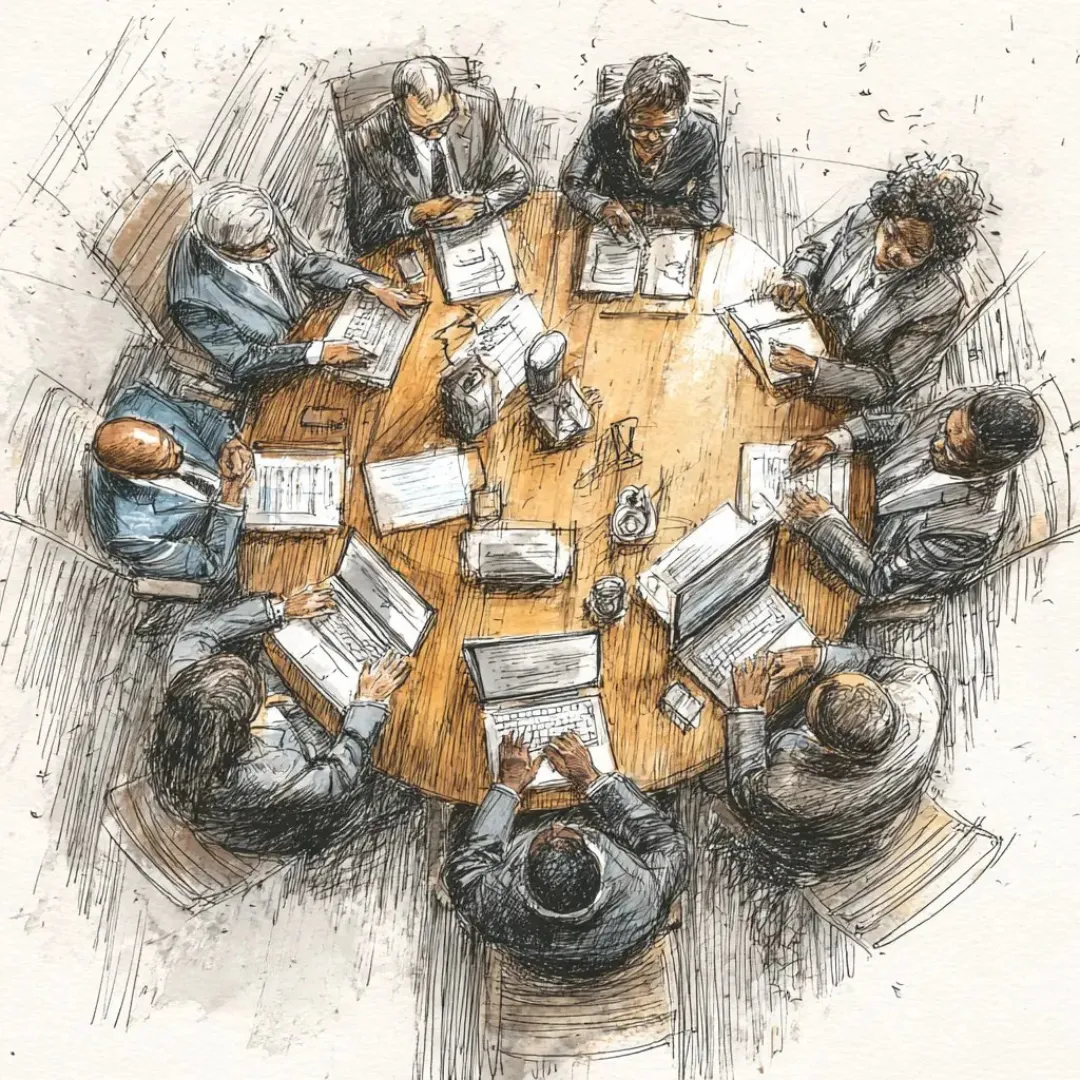Practical Ways to Strengthen Your Career Against Disruption
TL;DR: A resilient change management career requires more than technical skills—it’s about adaptability, branding, and growth. Practitioners should master and evolve their tools, build a visible personal brand, develop leadership and emotional intelligence, and create a portfolio that showcases results. Resilience also comes from maintaining strong networks, protecting well-being, embracing a growth mindset, and staying open to new opportunities. Ultimately, resilience is a skill you can cultivate to thrive no matter how the profession evolves.
Change management is a demanding field. Practitioners are often tasked with guiding organizations through turbulent times, navigating resistance, influencing leaders, and supporting employees through uncertainty. But in an ever-changing world, building a resilient career in change management requires more than just technical skills - it demands adaptability, strategic thinking, and a commitment to lifelong learning.
What is Career Resilience?
Career resilience is the ability to adapt, grow, and thrive in the face of challenges. For change management practitioners, this means staying relevant, maintaining your confidence, and continuing to add value even as the field evolves.
1. Master the Fundamentals — But Keep Evolving
- Know Your Tools and Models: Baseline: Be fluent in change management frameworks like ADKAR, Kotter’s 8 Steps, and Prosci’s methodology.
- Stay Curious: Regularly explore new models and techniques. Consider learning about behavioral psychology, neuroscience, or design thinking.
- Embrace Technology: Get comfortable with change management software, digital collaboration tools, and even AI-powered solutions.
2. Build a Personal Brand as a Change Practitioner
- Define Your Unique Value: Are you a master of stakeholder engagement? A creative communicator? A skilled facilitator?
- Showcase Your Expertise: Use LinkedIn to share insights, publish articles, or offer quick tips for other practitioners.
- Network with Purpose: Connect with other change practitioners, attend industry events, and engage in online communities.
3. Develop Leadership Skills - Even If You’re Not a Leader Yet
- Be Proactive: Offer to lead small change initiatives, even if they are outside your official role.
- Coach Leaders: Don’t just take direction - become a trusted advisor who helps leaders understand their role in driving change.
- Practice Emotional Intelligence: Learn to read the room, manage your own emotions, and adapt your communication style to different personalities.
4. Create a Change Management Portfolio
- Document Your Success Stories: Keep a record of your most impactful change initiatives.
- Showcase Quantifiable Results: Use metrics to demonstrate your impact (adoption rates, engagement scores, cost savings).
- Include Client Testimonials: Capture feedback from leaders you’ve supported.
5. Build a Resilient Network
- Stay Connected with Past Clients and Colleagues: Nurture your relationships with a quick message, helpful article, or friendly check-in.
- Join Communities of Practice: Participate in groups like ACMP, local change management chapters, or online forums.
- Find a Mentor - or Become One: Learning from others can accelerate your growth.
6. Protect Your Well-Being
- Set Boundaries: Change work can be intense. Know when to step back and recharge.
- Practice Mindfulness: Use stress management techniques to maintain your focus and resilience.
- Stay Active and Healthy: Prioritize physical and mental health to keep your energy high.
7. Embrace a Growth Mindset
- See Challenges as Opportunities: Every difficult project is a chance to learn.
- Seek Feedback Regularly: Ask for input from leaders, peers, and even your team.
- Celebrate Progress: Recognize your own growth and achievements.
8. Prepare for Future Opportunities
- Stay Job-Ready: Keep your resume and LinkedIn profile up to date.
- Explore New Roles: Don’t be afraid to look for new opportunities that challenge you.
- Be Open to Freelancing: Consider consulting, coaching, or building a side hustle.
Final Thought: Resilience is a Skill You Can Build
A successful change management career is not just about managing change for others - it’s about navigating change yourself. By mastering your craft, building your brand, and staying adaptable, you can build a resilient career that thrives no matter what the future holds.
ChangeGuild: Power to the Practitioner™
Frequently Asked Questions
What does “career resilience” mean in change management?
It’s the ability to adapt, grow, and thrive through challenges—staying relevant, confident, and valuable even as the field shifts.
Why is resilience more important than technical expertise alone?
Technical skills can date quickly, but resilience ensures you remain effective regardless of methodologies, tools, or organizational changes.
How can I keep my change management skills current?
Commit to lifelong learning—explore adjacent fields like neuroscience, behavioral psychology, and design thinking, and stay current with digital tools and AI.
What role does personal branding play for change practitioners?
Your brand signals your unique value—whether as a facilitator, communicator, or strategist—and makes you more visible to leaders, clients, and peers.
How do I build a personal brand without feeling like I’m “selling myself”?
Focus on sharing useful insights, case studies, and tips that help others. Consistency and authenticity build credibility over time.
Can I lead change without being in a formal leadership role?
Yes. By coaching leaders, advising peers, and proactively taking ownership of smaller initiatives, you can demonstrate leadership through influence.
What is a change management portfolio, and why should I create one?
It’s a curated record of your projects, results, and testimonials. It provides tangible evidence of your impact when seeking promotions or new roles.
How do I measure the impact of my change initiatives?
Track adoption rates, engagement metrics, productivity gains, and qualitative feedback from stakeholders to show measurable outcomes.
What’s the best way to expand my professional network?
Stay in touch with past colleagues and clients, join communities of practice like ACMP, and engage in LinkedIn or industry forums.
How important is mentorship for career resilience?
Critical. Mentors provide perspective and guidance, while mentoring others strengthens your own skills and credibility.
How do I prevent burnout as a change practitioner?
Set clear boundaries, use mindfulness or stress management practices, and maintain physical and mental health routines to sustain energy.
What mindset helps practitioners thrive long-term?
A growth mindset—seeing challenges as opportunities, seeking feedback regularly, and recognizing progress—keeps your career adaptable.
How can freelancing or consulting fit into a resilient career?
They provide flexibility and exposure to diverse industries, giving you new tools and experiences that strengthen adaptability.
What role does technology play in career resilience?
Technology is both an enabler and disruptor—being fluent in digital tools, AI, and collaboration platforms ensures you stay ahead of the curve.
What’s the first step I should take today to build resilience?
Audit your career toolkit: refresh your resume and LinkedIn, identify skill gaps, and set one learning or networking goal for the next 90 days.
A resilient career doesn’t happen by accident.
We support change practitioners in building sustainable, fulfilling careers—rooted in strategic growth, adaptability, and clear positioning. Whether you're navigating a pivot or planning long-term, we’ll help you chart a path that lasts.
Book a discovery call to invest in the next chapter of your change career.
This post is free, and if it supported your work, feel free to support mine. Every bit helps keep the ideas flowing—and the practitioners powered. [Support the Work]







